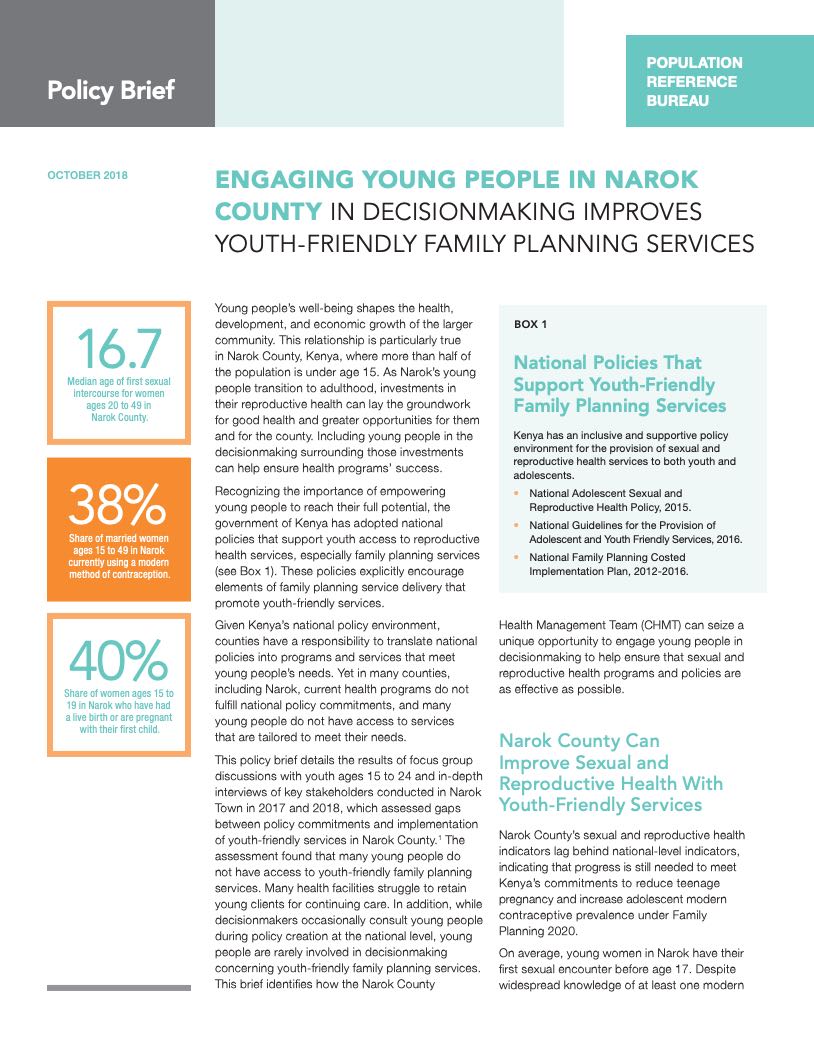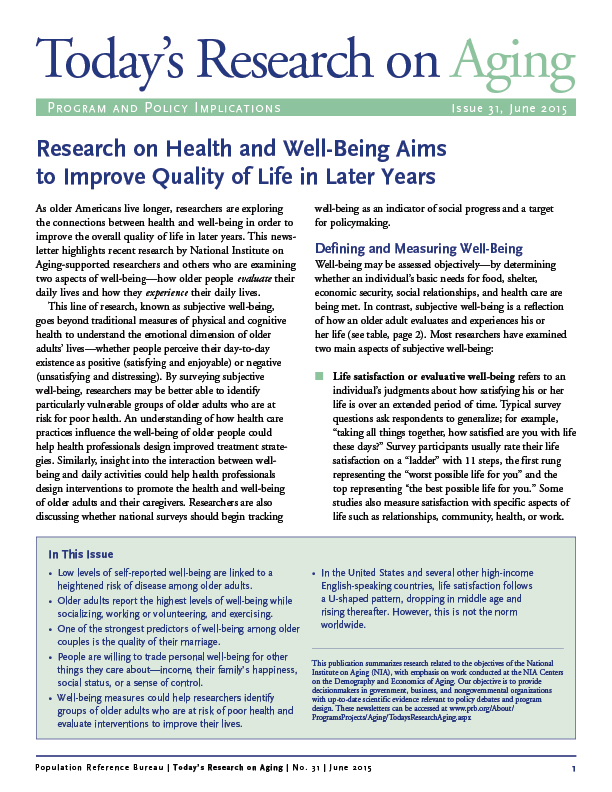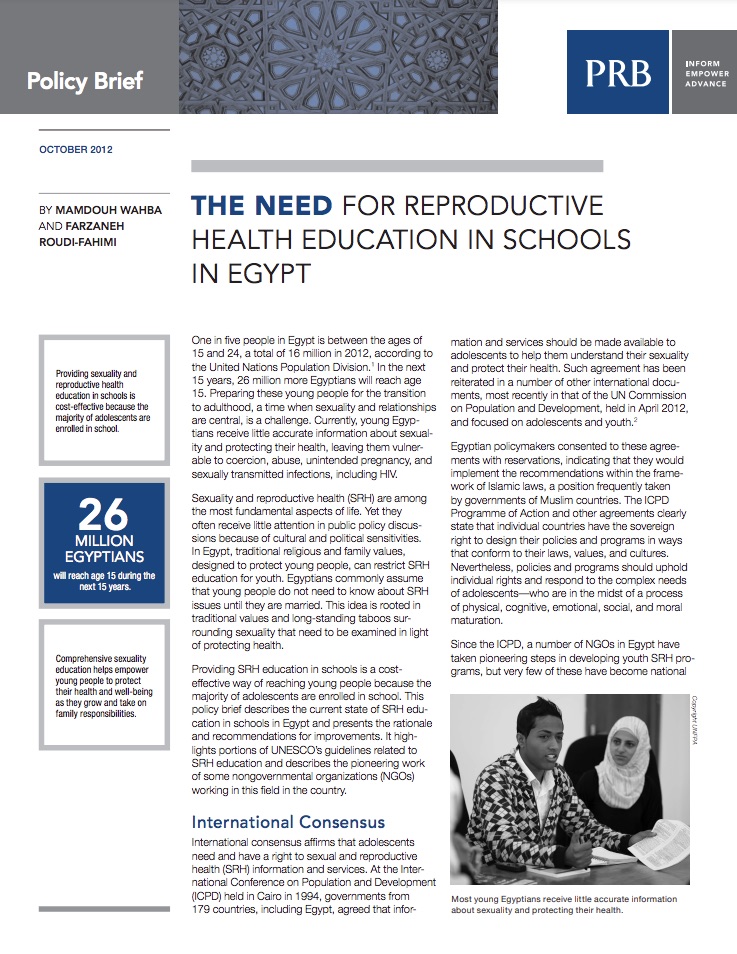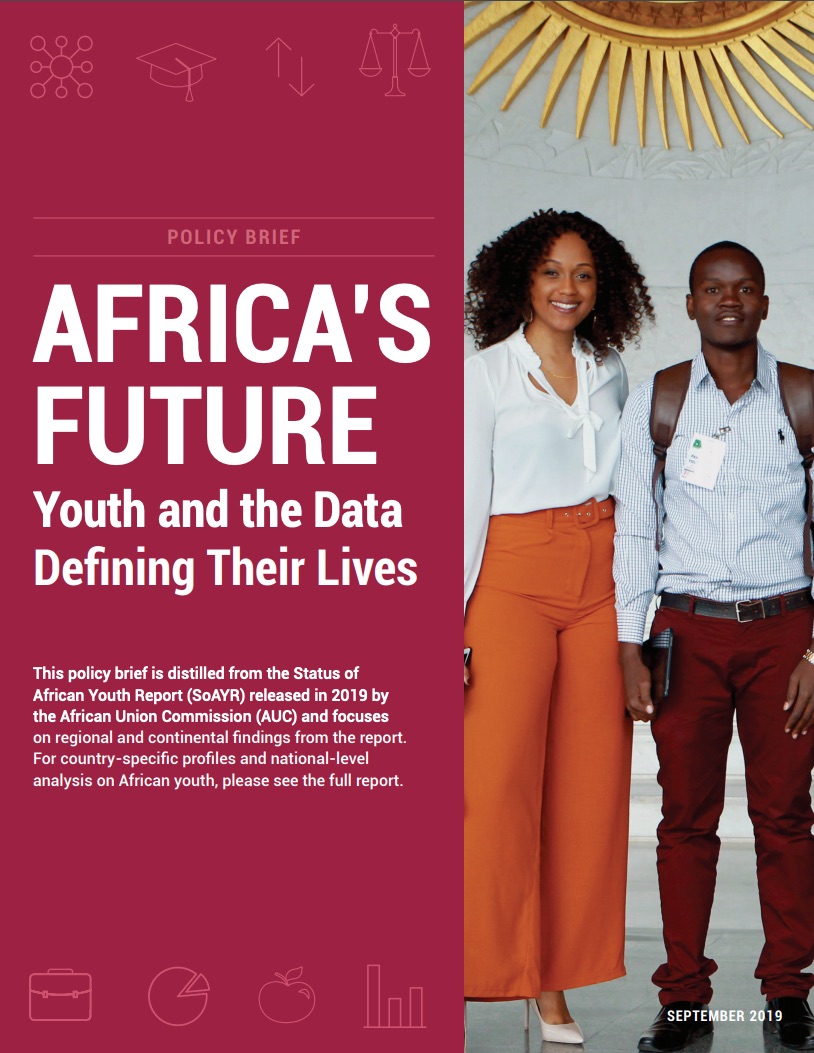Project: Empowering Evidence-Driven Advocacy
Policy Brief. Engaging Young People in Narok County, Kenya
The products share key data and policy commitments related to youths’ reproductive health.

Project: Empowering Evidence-Driven Advocacy
The products share key data and policy commitments related to youths’ reproductive health.

Project: Demography and Economics of Aging and Alzheimer’s Disease
Today's Research on Aging, Issue 31: As older Americans live longer, researchers are exploring the connections between health and well-being in order to improve the overall quality of life in later years.
(2010) will mark the sixth anniversary of the earthquake that spawned a tsunami on the coastlines of countries bordering the Indian Ocean.

Project: Middle East and North Africa Program (MENA)
(2012) One in five people in Egypt is between the ages of 15 and 24, a total of 16 million in 2012, according to the United Nations Population Division. In the next 15 years, 26 million more Egyptians will reach age 15.

Project: Supporting Population Evidence and Champions in Africa (SPEC)
By 2030, young Africans are expected to make up 42 percent of the world’s youth and account for 75 percent of the those under age 35 in Africa.
(2015) Up to half of all premature (or early) deaths in the United States are due to behavioral and other preventable factors—including modifiable habits such as tobacco use, poor diet, and lack of exercise, according to studies reviewed in a new National Research Council and Institute of Medicine report.1

Project: Demography and Economics of Aging and Alzheimer’s Disease
Families face the financial burden of paying out-of-pocket for care not covered by Medicare and Medicaid and the emotional toll of day-to-day caregiving.

PRB spoke with him about his goals for the program and future implications for the study of demography.